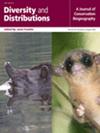Europe Under Siege? Predicting Fall Armyworm (Spodoptera frugiperda) Invasion Risk Based on Climatic Niche Shift and Species Distribution Models
Abstract
Aim
Invasive species pose a major threat to biodiversity and ecosystem functioning. Understanding how invasive species change their niche during invasion is fundamental for predicting their potential invasion risk in novel areas and environments. We here study the fall armyworm, FAW (Spodoptera frugiperda), one of the world's most devastating invasive pests due to its severe impact on cereal crops, posing a serious threat to agriculture. We first investigated climatic niche changes and tested for niche conservatism between native and invasive FAW ranges. We then modelled the potential FAW distribution to assess its invasion risk on a global scale, focusing on Europe and its agricultural areas.
Location
Global, with a focus on Europe.
Methods
We analysed niche overlap and niche dynamics to quantify climatic niche changes between native and invasive FAW ranges. To predict potential climatically suitable areas for FAW invasion, we used species distribution models (SDMs) calibrated on native, invasive and global (both native and invasive) occurrence datasets.
Results
Our results did not support niche conservatism between native and invasive FAW ranges. We observed a climatic niche shift and expansion in the invasive range towards warmer and drier areas. The highest potential climatic suitability for FAW invasion was identified in parts of Africa, India, China, Australia and in large areas of southwestern, central and southeastern Europe.
Main Conclusions
Given the observed niche shift and its strong migratory capacity, FAW is likely to further expand its range and establish itself in southern Europe, with potential seasonal migrations to more temperate regions driven by increased temperatures associated with ongoing climate change. Our study confirms that FAW poses a significant threat to global and European biodiversity and agriculture, highlighting the urgent need for coordinated monitoring efforts and the implementation of adaptive management strategies, including sustainable ones, to protect agricultural systems worldwide.


 求助内容:
求助内容: 应助结果提醒方式:
应助结果提醒方式:


